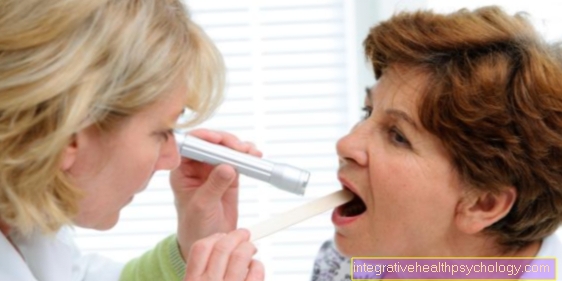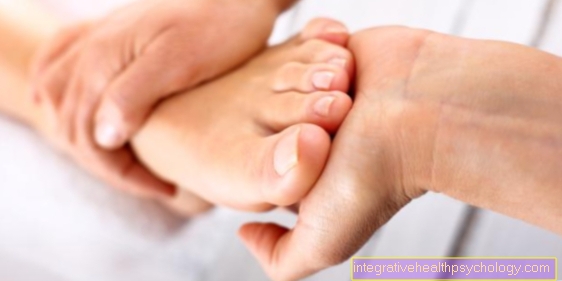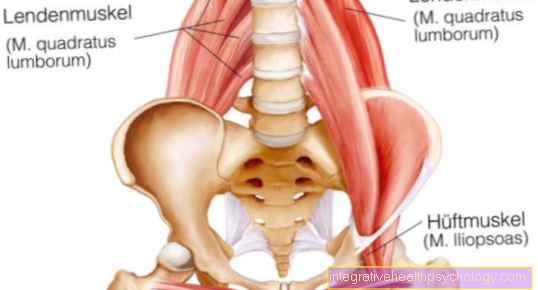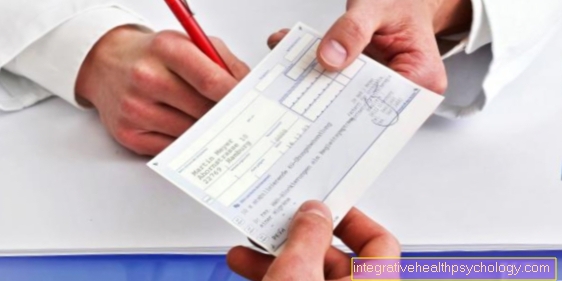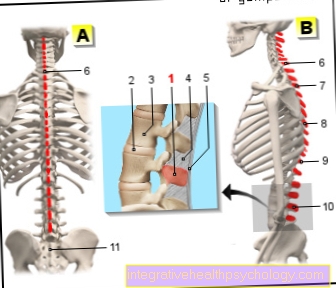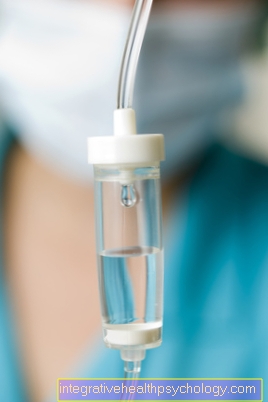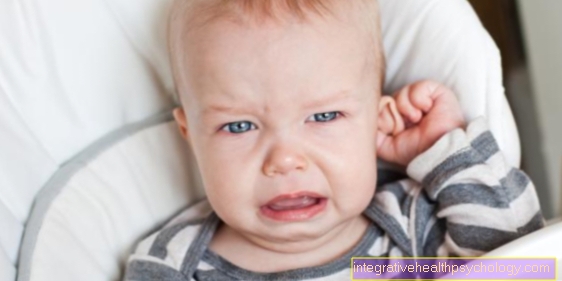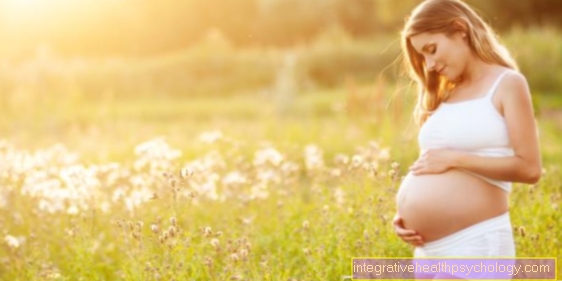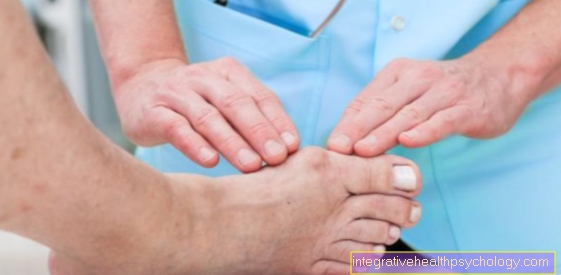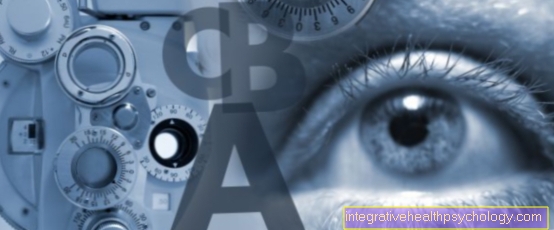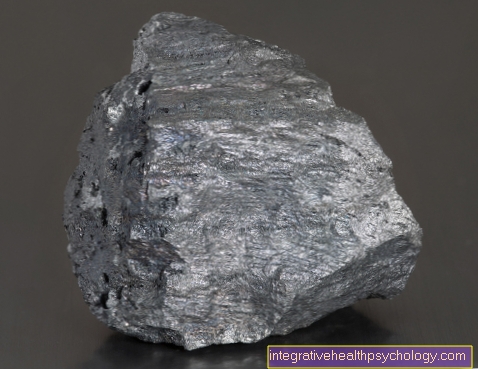Broken bones in the baby
definition
Fortunately, broken bones in babies are relatively rare.
After all, babies are usually well looked after by their parents and, like the somewhat older children, do not dare, for example, brave and risky climbing maneuvers. Still, broken bones can occur in babies.
These are often associated with so-called birth trauma. This refers to injuries that can occur in the birth canal during birth. Babies who are already slightly larger and heavier than average in the womb are more frequently affected by this.
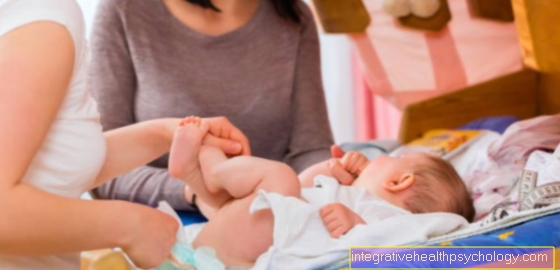
The most commonly affected bone is the collarbone. Furthermore, one should know that a broken bone in children is often not the same as that in an adult. The bones of babies in particular are much more elastic and softer. As a result, the bones do not “completely” break through, but a so-called “green wood fracture” occurs (the periosteum breaks on one side, but the opposite side remains intact, comparable to breaking a young green twig).
It is extremely rare for babies / children to break through completely. In addition, fractures in babies / children usually heal faster and often do not require surgery or fixation / immobilization.
causes
Various causes can lead to broken bones in babies.
For one, a birth canal that is too narrow can be a problem for babies that are too tall. It is not uncommon to observe a collarbone fracture, as described above (fracture = break).
Furthermore, falls of the baby, for example from the changing table or the like, lead to such injuries. Unfortunately, child abuse by parents or third parties nowadays also has to be named as the cause of broken bones in babies and children.
diagnosis
In most cases, the first suspicious diagnoses can be made simply through relieving posture, asymmetrical movements or reflexes.
Palpation (manual palpation examination) can usually provide sufficient information.
Sometimes an x-ray is included. The concern of many parents that radiation harms the child is "relatively" unfounded (attention: this does not apply to unborn children). The radiation intensity is roughly comparable to that of a flight. Nowadays, experienced ultrasound examiners can detect many fractures on ultrasound as well, so an x-ray is not always necessary.
Symptoms associated with a broken bone in the baby
Symptoms associated with broken bones can of course be pain. These can occur in varying degrees of intensity depending on the type and location of the break. Sometimes children have almost no pain at all.
In addition, as already mentioned above, one observes relieving postures of the affected body parts more frequently. This means that the babies, for example, no longer move their arms synchronously, but rather an asymmetry in the movement sequences. This also means that reflections can no longer be executed on the same side.
In addition, swelling, overheating, and redness are other symptoms of the non-bacterial inflammation accompanying the hernia. This is important for initiating bone healing.
Pain from a broken bone in the baby
In so-called greenwood fractures, pain is usually the only sign of a break (if no X-ray examination is done).
The type and intensity of the pain always depends on the type of break and the location. In addition, each individual pain feels a little different. It is therefore difficult to define the subject of pain in concrete terms. Some complain of stabbing pain, others of dull pain. Still others have almost no pain.
Treatment and therapy
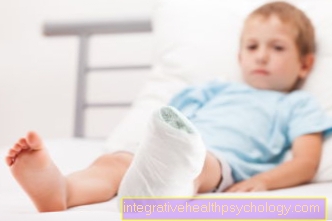
Fortunately, it can be said that the bone healing processes in children are even more dynamic.
The types of most broken bones in babies / children are also grateful for fast healing processes, so that complex therapy with surgery and a long regeneration phase is usually not necessary.
For example, collarbone fractures (if not dislocated) in babies as a result of birth trauma are often only observed and not actively treated. It is sufficient if you carefully dress the children and do not put excessive strain on the affected shoulder for a certain period of time.
Greenwood fractures, for example on the arms and legs, are usually only put in a cast for a few weeks and can often be fully moved and loaded again after about 2 weeks.
Fortunately, surgery is rarely necessary. This is always the case when fractures would not heal properly without correction. If an operation is necessary, nowadays there are child-friendly “nails” and “plates” that are suitable for bringing bones back into position properly so that bone healing processes can close the fracture site again.
Disadvantages, however, are always that operations are associated with complications and risks (anesthesia, etc.) and material (nails, plates, etc.) that has been introduced has to be removed again (nails and plates do not grow with the patient). However, experience shows that even if an operation is necessary, the children / babies survive it very well in most cases.
More on this: Anesthesia in children - procedure, risks and side effects
Healing a broken bone in a baby
Child / baby bones heal slightly differently and faster than adult bones. First, child bones don't shatter as quickly as an adult's, and second, child bones are still growing. They are i.a. more elastic, more flexible and better supplied with blood.
Because the bone metabolism in children is very good due to growth, fractures heal much faster in children. Cells are brought about faster by the good blood circulation and build new bone tissue faster. In general, it can be said that the body's own repair mechanisms often start much faster in children. Therefore, the healing usually only takes between two and four weeks until the bones can be fully loaded again.
Collarbone fractures in babies
The broken collarbone is the most common birth-related injury in babies.
This mostly occurs in connection with babies that are too big in relation to the average. In many cases, it is a greenwood fracture that is only discovered during follow-up examinations by the pediatrician after the birth. This then feels a so-called "callus" (newly formed bone tissue) in the shoulder area. Very rarely are fractures that have shifted (displaced). Should you notice after the birth that the movements of the arms and shoulders are asymmetrical or that certain reflexes (Moro reflex) cannot be triggered on the same side, this suggests a broken collarbone.
You might also be interested in: Cupbone fractures in children
Broken bones in the womb
In healthy children, broken bones in the womb are very rare and never actually occur.
The baby is in the womb thanks to the amniotic sac and the amniotic fluid in it, optimally against bumps, vibrations and much more. protected.
The exception is a certain hereditary disease. We are talking about vitreous bone disease (Osteogenesis imperfecta). This is a connective tissue disease that mainly affects the skeletal system. The bones are less resilient and break even with the slightest stress. In the most severe form of this disease, bones can break even in the womb.
Read more about this: Osteogenesis imperfecta



